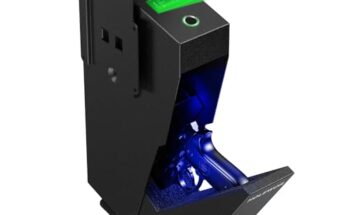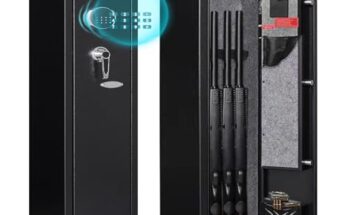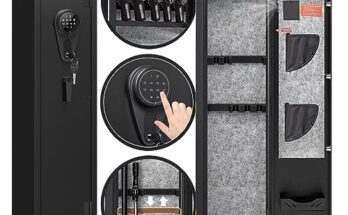To build a gun safe in a closet, select a discrete location and reinforce it with sturdy materials. Secure the safe to the structure for added safety.
Building a gun safe within a closet requires strategic planning to ensure both security and accessibility. Gun owners understand the critical balance between keeping firearms out of the wrong hands and having quick access when needed. The task involves picking the right spot in your closet, one that is not immediately visible but is still convenient for you.
Once a location is chosen, the focus shifts towards reinforcing the space. Materials such as steel or thick hardwood can be used to fortify the walls and door of the safe, making it resistant to break-ins. Additionally, installing a quality lock and anchoring the safe to the building’s frame are paramount steps to prevent the safe from being removed or tampered with. Creating an in-closet gun safe is about blending security measures with wise space management, all while complying with safe storage laws.
Why Build A Gun Safe In Your Closet?
Responsible gun owners value safety and security. Building a gun safe in a closet addresses these needs. It keeps firearms from unwanted access. Let’s dive into why turning your closet into a gun safe is sensible.
Space-efficiency Concerns
Maximizing space is key. Many homes lack extra square footage. Thus, a closet gun safe is practical. The following points highlight space efficiency:
- Closets offer discrete storage areas, maintaining room functionality.
- Custom-sized safes mean no wasted space.
- Shelving and vertical space in closets provide ample storage for guns and accessories.
Enhanced Security Advantages
Security improvements are clear-cut. Hidden in a closet, safes become less prominent. This section explains some security benefits:
- Concealed safes prevent easy detection by intruders.
- Integrated locks offer customized security levels.
- Proximity to the bedroom allows quick access during emergencies.
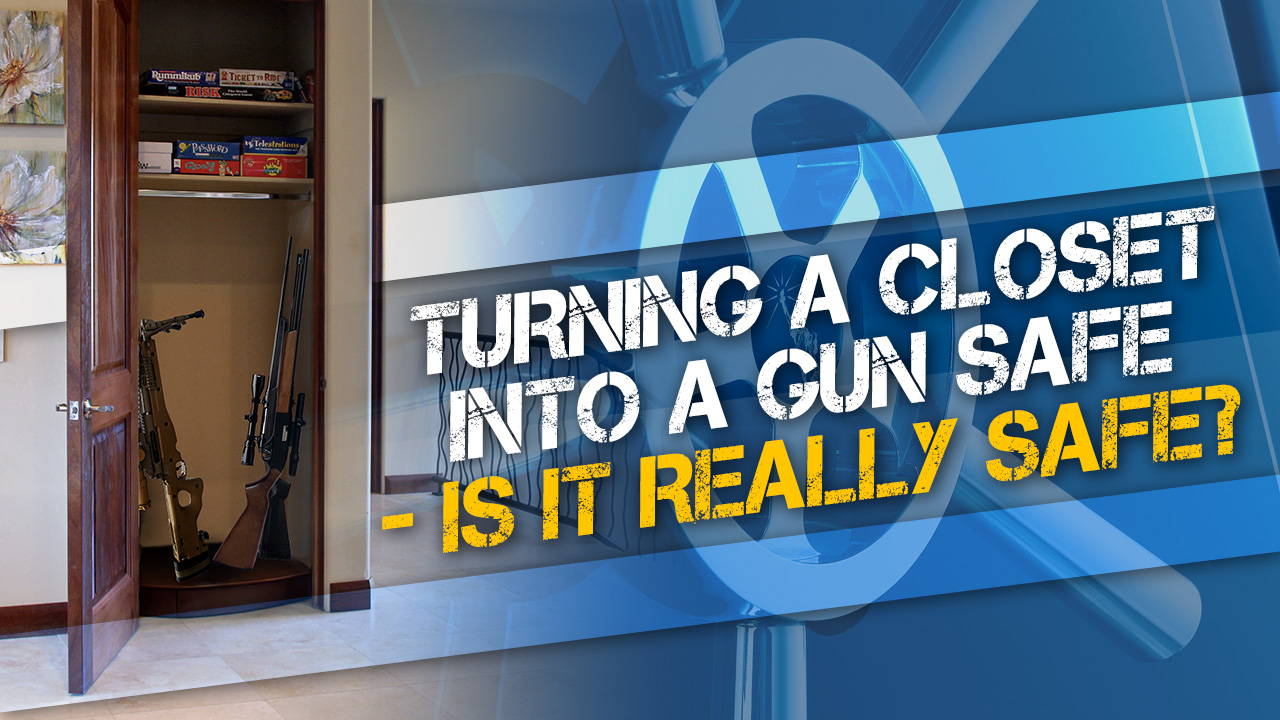
Credit: www.libertysafe.com
Preparatory Steps Before Construction
Building a gun safe in a closet is not just about wood or screws. It starts with careful planning. Let’s ensure the foundation for your gun safe is rock-solid with these essential preparatory steps.
Assessing Your Space
Accurately measure your closet space. This is critical to determine the gun safe size. Consider door swing and the clearance needed. Make sure to:
- Check for obstructions like pipes or vents.
- Leave extra room for future firearm acquisitions.
- Plan for weight distribution if you have an expansive firearm collection.
Understanding Local Laws And Regulations
Gun safety is not just a personal concern but a legal one too. Research local laws to ensure compliance. Make note of specifics, such as:
| Law/Regulation | Requirement |
|---|---|
| Safe storage laws | Locking mechanisms, material strength |
| Building codes | Permits, construction standards |
Gather Necessary Tools And Materials
Collect all the tools and materials before you start. This will save time and hassle. Essential items include:
- Measuring tape
- Carpentry tools
- Locking mechanism
- Steel sheets or reinforced wood
- Anchoring materials
Be sure to wear safety gear at all times.
Designing The Safe: Size, Layout, And Materials
Designing your own gun safe within a closet requires careful planning and precise execution. It is not just an effective way to store firearms away from prying hands, but also a customized solution tailored to fit your personal needs and space. The right design entails a thoughtful consideration of size, layout, and materials to ensure security and accessibility.
Determining The Size And Capacity
Firstly, think about the size and capacity needed for your gun collection. Measure your closet dimensions to ascertain how much space is available. Use these measurements to decide on the safe size. Account for future purchases, too.
- Measure the height, width, and depth of your closet.
- Consider the number and types of firearms to store.
- Allow extra space for ammunition and accessories.
Choosing The Right Materials
The materials you choose determine the safe’s resilience. Heavy gauge steel is a popular choice for its durability and resistance to burglary attempts. For the interior, soft foam or carpeting can help prevent scratches on firearms.
| Material | Benefits |
|---|---|
| Steel | Security, fire resistance |
| Foam | Protection for firearms |
| Carpeting | Scratch prevention |
Blueprints And Safety Features
With the safe’s size and materials in mind, it’s time to sketch the blueprint. Focus on a layout that ensures easy access and organized storage. Include specified safety features like a reliable lock mechanism and possibly biometric access.
- Create a detailed blueprint to follow during construction.
- Prioritize an ergonomic design for easy access.
- Integrate advanced safety features, such as biometric scanners or keypad locks.

Credit: vlineind.com
Step-by-step Construction Guide
Creating a secure space for firearms is essential for safety and peace of mind. A gun safe in a closet combines convenience with security. This step-by-step guide provides instructions on crafting a robust safe within the confines of your closet space. The process detailed here ensures that you have a solid and reliable place to store your firearms away from unauthorized access.
Building The Frame
- Select materials suited for durability and strength; thick plywood or steel are ideal.
- Measure the intended closet space to determine the size of the frame.
- Cut the materials to size, ensuring precision for a snug fit in the closet.
- Assemble the frame using heavy-duty screws or welding for metal structures.
- Ensure the frame is square and even to avoid gaps and weaknesses in the structure.
Installing Locking Mechanisms
- Choose a high-quality lock, such as a combination or biometric lock, for enhanced security.
- Mark the location for the lock on the door of the safe for precision.
- Drill holes carefully and install the locking mechanism according to the manufacturer’s instructions.
- Test the lock multiple times to ensure reliability and ease of use.
Reinforcing The Safe Against Break-ins
- Line the interior of the frame with a steel sheet or add a second layer of plywood for extra strength.
- Consider using tamper-resistant screws or welds to secure all components of the safe.
- Install multiple hinges on the door to resist forceful entry attempts.
- Add a layer of fire-resistant insulation to protect contents from fire hazards.
Interior Arrangements And Customizations
Turning a closet into a gun safe requires smart interior arrangements and customizations. These upgrades add value and security. Let’s create a space that is both secure and organized for your firearms and gear. Consider each section carefully to maximize space and maintain order.
Custom Racks And Shelving
Custom racks and shelving are the backbone of an efficient gun safe. The right setup ensures guns stay in place and prevent damage. Build racks that fit your guns’ shapes and sizes. Use strong materials like metal or hardwood for durability. For pistols, use foam-lined drawers or small shelves.
Shelving units should be adjustable, letting you change the layout as your collection grows. Include space for gun cases and accessories. Measure your closet and plan the layout before building.
Lighting And Humidity Control
Proper lighting helps you see inside your safe easily. Install LED lights for a bright, energy-efficient solution. Position them to avoid shadows. Use motion sensors for convenience and energy savings.
Controlling humidity is critical to prevent rust. Use a small dehumidifier or silica gel packs to keep the air dry. Install a hygrometer to monitor the humidity level. Keep it below 50% to protect your guns.
Organizational Tips For Firearms And Ammunition
Organize your guns by type or frequency of use. Keep your most used firearms within easy reach. Use labels for quick identification.
Store ammunition separately on different shelves. Use ammo cans or lockable boxes to keep it organized and secure. Label each can or box to identify the ammo type and caliber quickly.
For small items like cleaning supplies or magazines, use clear bins or organizers. This helps you find what you need without searching. Keep an inventory list for better tracking of your items. Regularly update it to stay on top of your collection’s status.
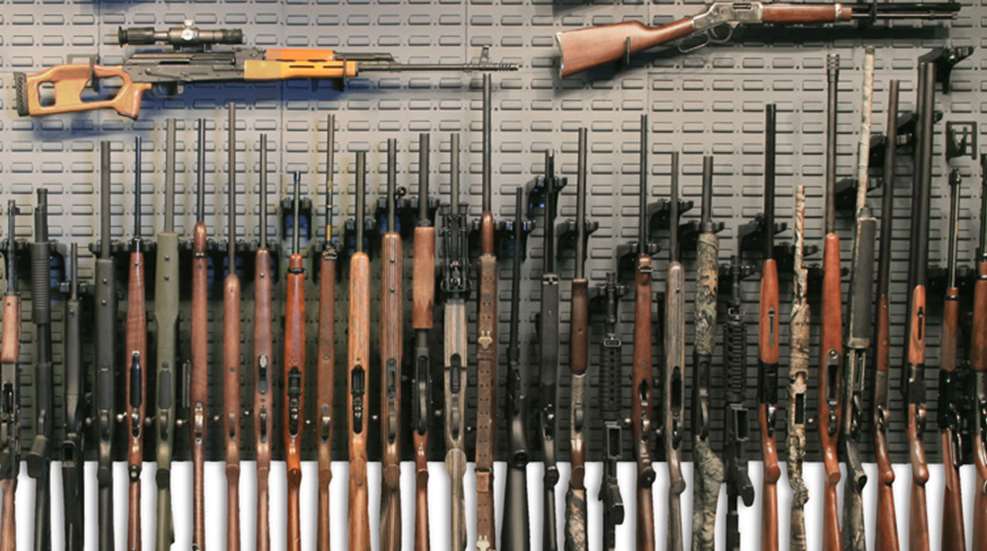
Credit: www.nrafamily.org
Maintaining Your Closet Gun Safe
Keeping your closet gun safe in top condition is crucial for safety and accessibility. A well-maintained safe ensures your firearms remain secure and in good working order. Follow these guidelines to maintain your gun safe effectively.
Regular Checks And Balancing
Periodic inspections keep your safe reliable. Look for signs of wear and tear that could compromise security. Ensure your safe’s door aligns properly, and the locking mechanism functions smoothly.
- Check the door hinges
- Test lock operation
- Verify proper seal closure
Upgrading Security Measures
Enhancements can bolster your safe’s security. Consider modern locking systems with features like biometrics or electronic keypads. Additional reinforcements might include:
- Bolting the safe to the closet floor
- Installing a motion-sensor alarm
- Adding surveillance equipment
Handling And Storage Best Practices
Proper gun storage is essential. Each firearm should rest in a separate holder to prevent scratches or damage. Use desiccants to control moisture inside the safe.
| Item | Function |
|---|---|
| Gun Holders | Prevent contact damage |
| Desiccants | Control moisture levels |
Unload firearms before storage to ensure safety.
Frequently Asked Questions On How To Build A Gun Safe In A Closet
Should A Gun Safe Be In A Closet?
Storing a gun safe in a closet is advisable as it offers concealment, limited visibility, and can save space in your home while ensuring quick access. Ensure the safe is securely anchored to thwart theft.
Can You Turn A Closet Into A Safe Room?
Yes, you can convert a closet into a safe room. Strengthen walls and door, and install a secure locking system for safety. Ensure proper ventilation and stock emergency supplies for readiness.
Where Not To Store A Gun Safe?
Avoid storing a gun safe in damp areas, near windows, in plain sight, or in high-traffic zones of your home. Choose a discreet, climate-controlled location to enhance security and prevent corrosion.
What Is The Best Material For Gun Room Walls?
The best material for gun room walls is reinforced steel or ballistic grade Kevlar, ensuring superior security and protection.
Conclusion
Constructing a gun safe in your closet ensures secure, accessible firearm storage. Embrace this DIY project to tailor security to your needs. Remember, it’s critical to prioritize safety and legality. Seek expert advice if necessary. Start now, and safeguard your home with a custom, concealed gun safe.
